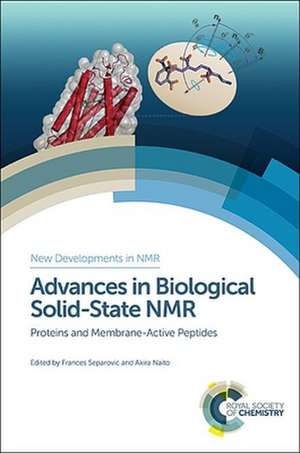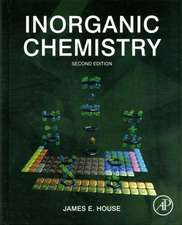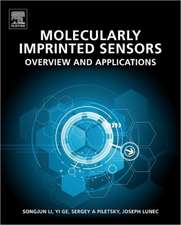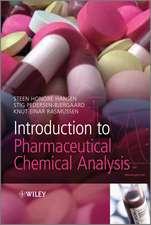Advances in Biological Solid-State NMR: New Developments in NMR
Editat de Frances Separovic, Akira Naitoen Limba Engleză Hardback – 5 mar 2014
Din seria New Developments in NMR
- 14%
 Preț: 1147.27 lei
Preț: 1147.27 lei - 14%
 Preț: 1306.05 lei
Preț: 1306.05 lei - 5%
 Preț: 1359.30 lei
Preț: 1359.30 lei - 14%
 Preț: 1386.51 lei
Preț: 1386.51 lei - 9%
 Preț: 1170.75 lei
Preț: 1170.75 lei - 14%
 Preț: 1389.40 lei
Preț: 1389.40 lei - 14%
 Preț: 1237.57 lei
Preț: 1237.57 lei - 14%
 Preț: 1555.76 lei
Preț: 1555.76 lei - 14%
 Preț: 1381.12 lei
Preț: 1381.12 lei - 14%
 Preț: 1381.12 lei
Preț: 1381.12 lei - 14%
 Preț: 1249.68 lei
Preț: 1249.68 lei - 14%
 Preț: 1386.51 lei
Preț: 1386.51 lei - 14%
 Preț: 1394.79 lei
Preț: 1394.79 lei - 9%
 Preț: 1170.31 lei
Preț: 1170.31 lei - 9%
 Preț: 1031.40 lei
Preț: 1031.40 lei - 9%
 Preț: 1242.38 lei
Preț: 1242.38 lei - 9%
 Preț: 1102.93 lei
Preț: 1102.93 lei - 9%
 Preț: 1101.31 lei
Preț: 1101.31 lei - 9%
 Preț: 1241.94 lei
Preț: 1241.94 lei - 5%
 Preț: 1152.00 lei
Preț: 1152.00 lei - 9%
 Preț: 1240.85 lei
Preț: 1240.85 lei - 9%
 Preț: 1101.31 lei
Preț: 1101.31 lei - 5%
 Preț: 1295.40 lei
Preț: 1295.40 lei - 9%
 Preț: 1379.32 lei
Preț: 1379.32 lei - 9%
 Preț: 1171.18 lei
Preț: 1171.18 lei - 9%
 Preț: 1241.72 lei
Preț: 1241.72 lei - 9%
 Preț: 1101.31 lei
Preț: 1101.31 lei - 5%
 Preț: 1295.18 lei
Preț: 1295.18 lei - 9%
 Preț: 1033.59 lei
Preț: 1033.59 lei
Preț: 1365.90 lei
Preț vechi: 1588.26 lei
-14% Nou
261.37€ • 279.49$ • 217.92£
Carte tipărită la comandă
Livrare economică 18 aprilie-02 mai
Specificații
ISBN-10: 1849739102
Pagini: 630
Ilustrații: 85 black & white illustrations, 30 colour illustrations
Dimensiuni: 163 x 239 x 41 mm
Greutate: 1.09 kg
Editura: Royal Society Of Chemistry
Seria New Developments in NMR
Cuprins
Textul de pe ultima copertă
The complexity and heterogeneity of biological systems has posed an immense challenge in recent years. An increasingly important tool for obtaining molecular and atomic scale information on a range of large biological molecules and cellular components is solid state NMR. This technique can address fascinating problems in structural biology, including the arrangement of supramolecular complexes and fibril formation in relation to molecular folding, misfolding and aggregation.
Advances in Biological NMR brings the reader up to date with chapters from international leaders of this growing field, covering the most recent developments in the methodology and applications of solid state NMR to studies of membrane interactions and molecular motions. A much needed discussion of membrane systems is detailed alongside important developments in in situ analysis.
Topics include applications to biological membranes, membrane active peptides, membrane proteins, protein assemblies and in-cell NMR. This exposition of an invaluable technique will interest those working in a range of related spectroscopic and biological fields. A basic introduction invites those interested to familiarise themselves with the basic mathematical and conceptual foundations of solid state NMR. A thorough and comprehensive discussion of this promising technique follows, which is essential reading for those working or studying at postgraduate level in this exciting field.













